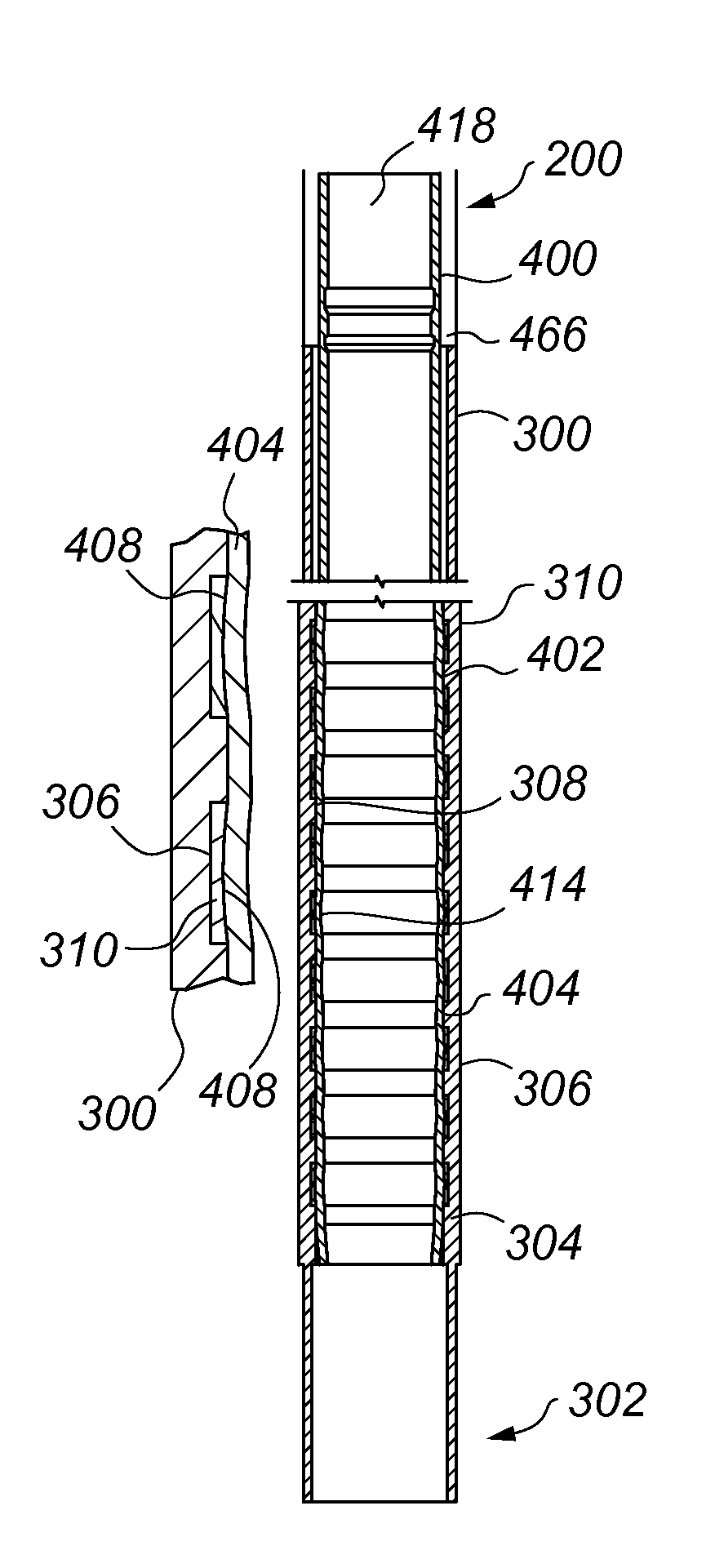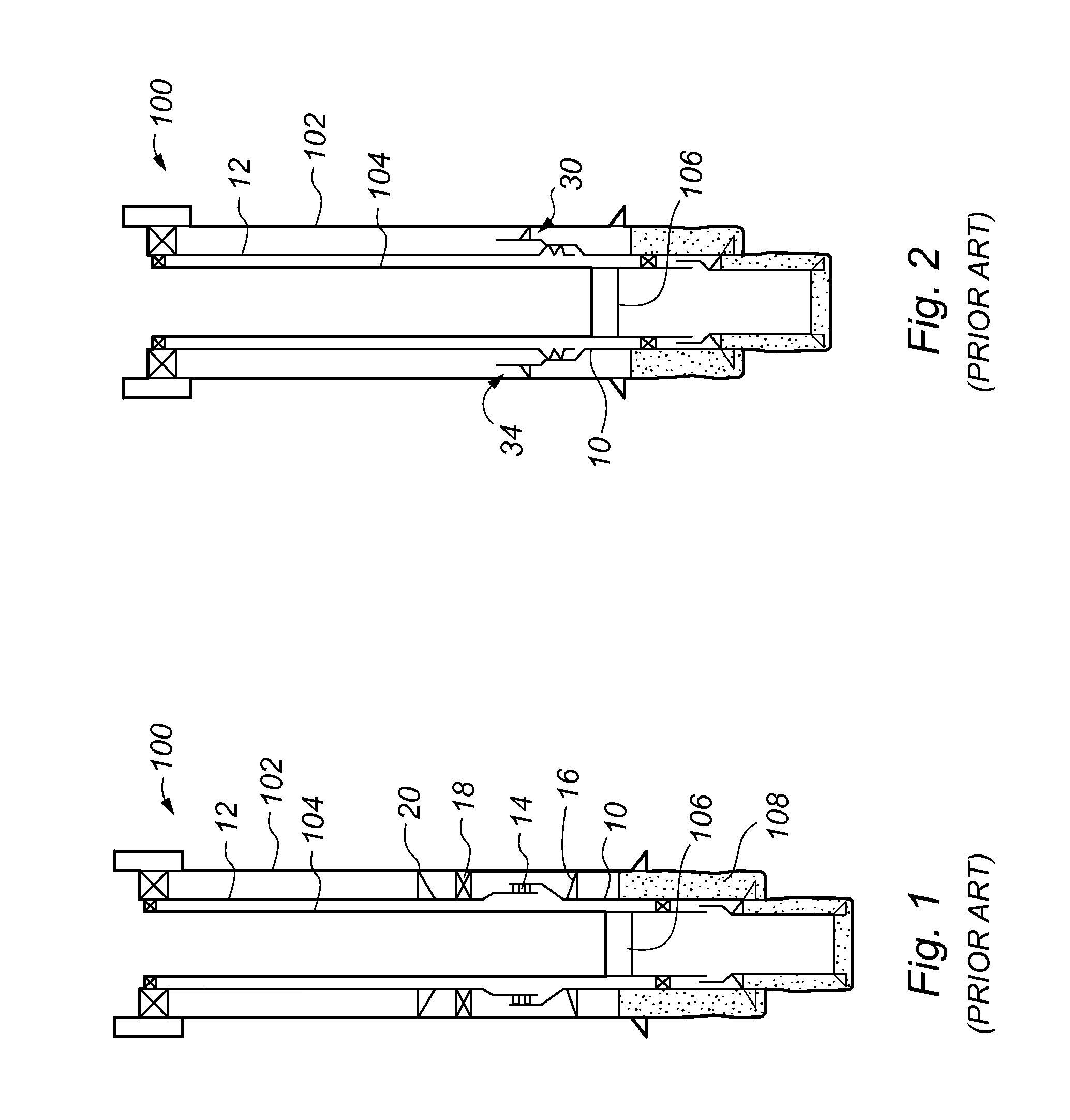Apparatus and Method for Use In Slim Hole Wells
a technology of apparatus and wellbore, which is applied in the direction of drilling casings, wellbore/well accessories, pipes, etc., can solve the problems of affecting the sealing performance of the well, so as to improve the sealing performance.
- Summary
- Abstract
- Description
- Claims
- Application Information
AI Technical Summary
Benefits of technology
Problems solved by technology
Method used
Image
Examples
Embodiment Construction
[0054]Embodiments of the present invention will now be described, by way of example only, with reference to the accompanying drawings in which:
[0055]FIG. 1 is a sectional side view of a method of providing a liner tieback connection according to the prior art;
[0056]FIG. 2 is a sectional side view of a further prior art method of providing a liner tieback connection;
[0057]FIGS. 3 to 5 are sectional side views of stages of the prior art method of FIG. 2;
[0058]FIGS. 6 to 9 are sectional side views of a number of different embodiments of a first casing section that can be used in the method of providing a tubular connection according to the present invention;
[0059]FIG. 10 is a sectional side view showing a cover used in conjunction with the first casing section used in the method of the present invention;
[0060]FIGS. 11 to 13 are sectional side views of a part of a portion of a liner for connecting with the first casing section of FIGS. 6 to 10;
[0061]FIGS. 14 to 17 are sectional side vie...
PUM
 Login to View More
Login to View More Abstract
Description
Claims
Application Information
 Login to View More
Login to View More - R&D
- Intellectual Property
- Life Sciences
- Materials
- Tech Scout
- Unparalleled Data Quality
- Higher Quality Content
- 60% Fewer Hallucinations
Browse by: Latest US Patents, China's latest patents, Technical Efficacy Thesaurus, Application Domain, Technology Topic, Popular Technical Reports.
© 2025 PatSnap. All rights reserved.Legal|Privacy policy|Modern Slavery Act Transparency Statement|Sitemap|About US| Contact US: help@patsnap.com



